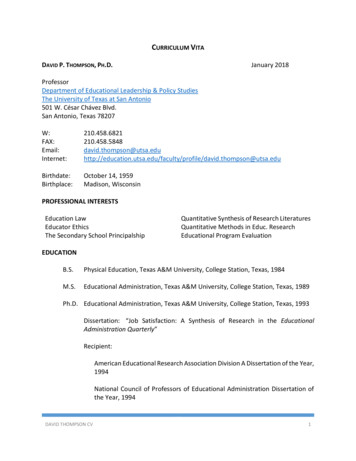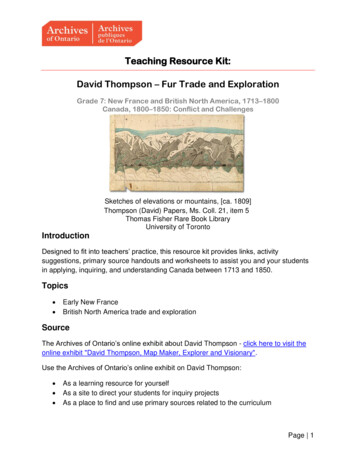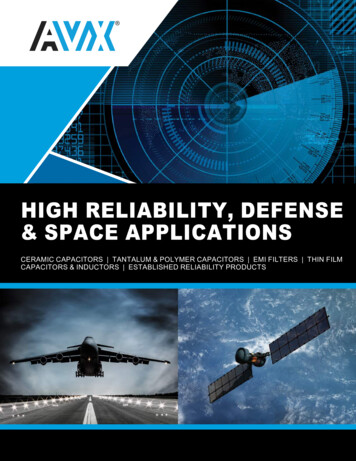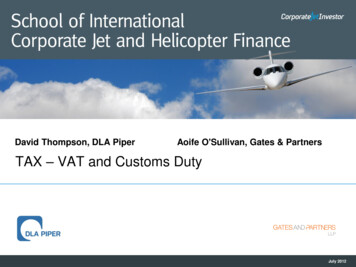
Transcription
David Thompson, DLA PiperAoife O'Sullivan, Gates & PartnersTAX – VAT and Customs DutyJuly 2012
Importation into the EU Basic Principles Customs duty is payable on the import of goods by the importer by reference to theCommon Customs Tariff of the EU. VAT is due on the import of goods into the EU – the VAT is payable by the importer whois liable to pay the customs debt under the Community Customs Code and at the sametime as the Customs Debt is due. The declarant is liable, but if the declaration is made on behalf of another person, thatother person is also liable. Where proper import procedure is not followed liability can spread wider to other personsinvolved in the unlawful introduction and who acquire an interest in the goods. Civil aircraft are normally imported with end use relief for free circulation within the EU – analternative is temporary admission, to which strict limitations apply. Declaration required on Single Administrative Document ("SAD") - UK form is the "C88"July 2012
Customs Duty – End Use Relief Civil aircraft with a UK, EU or non-EU civil registration – the commodity code in Box 33 of theC88 will normally be 88 02 30 00 10 (unladen weight exceeding 2,000 Kg, but not more than15,000 Kg) or 88 02 40 00 10 (unladen weight exceeding 15,000 Kg). Import is under the end use authorisation of the importer, who must be established in the EU– simplified procedures (that otherwise apply only to occasional importations of other goods)apply to registered civil aircraft. The procedure code is entered in Box 37 of the C88 and the end-use authorisation numberin box 44. Production of a valid civil registration certificate is required at the time of import – it is theexistence of the registration of the aircraft that "completes" end use relief. Agents should not identify themselves as consignee on the C88, but clearly indicate theimporter – both agent and importer are liable. End use relief can also apply to parts, but an alternative certification for parts is import withan airworthiness certificate.July 2012
Temporary Admission Aircraft registered and owned (or at least owned, if not registered) outside the EU . Period of use under TA where it is used by a non-EU person is: private personal use – six months; commercial use - time taken to load/unload or pick up/set down for maximum of 24 months. Period of use under TA where use is by an EU person: Private transport: hired outside the EU to return home to EU or to leave the EU – 8 days; occasional private use permitted by non-EU owner/employer – six months; preparing to emigrate outside EU – three months. Commercial – if commercial use arranged by non-EU person and has given written authorityto EU person to use it on their behalf – time taken to transport goods or persons to or fromthe EU (also certain other limited categories 5 or 8 days).July 2012
Importation – General Aviation Report Prior to arrival in the UK a General Aviation Report ("GAR") must be completed detailing theintended use of the aircraft. The GAR must be sent by fax or e-mail to the National Co-Ordination Unit ("NCU") by thefollowing deadlines prior to arrival: From elsewhere in the EU – four hours; From the Channel Islands – twelve hours; From elsewhere outside the EU – 24 hours. The airport has to be a designated airport or "certificate of agreement" (COA) airportapproved for import entry.July 2012
VAT – General 1 Goods - subject to VAT in the member state of the EU where supplied. Supply of goods occurs where: there is a "transfer of the whole property in goods"; possession is transferred under "agreements which expressly contemplate that theproperty will also pass at some time in the future" – e.g. hire purchase/conditional sale No supply for VAT where aircraft sold by a mortgagee after repossession under an aircraftmortgage where owner is private owner, subject to certain conditions. Goods also treated as supplied in the UK: When imported into the UK from outside the EU; On "acquisition" (import) by business in the UK from another EU member state; aircraft is "new" means of transport ( 1550Kg MTOW and not more than three monthssince first entered into service and note more than 40 flying hours).July 2012
VAT General 2 Leasing into UK or other member state: B2C – register and charge VAT; B2B – reverse charge on recipient; import from outside EU – recovery Thirteenth Directive; liability to account for VAT onsubsequent sale – sch 3A VATA 1994 Export outside the EU – zero-rating conditions: export within three months; commercial evidence of export must be retained; "indirect" export – customer exports and must provide evidence to exporter. Treatment of leasing varies between member statesJuly 2012
VAT – General 3 Anything that is a supply for consideration that is not a supply of good is a supply of services Operating leases and finance leases – VATable supplies of services Basic place of supply of services rules -B2C – where supplier "belongs" - B2B – wherecustomer "belongs" Special Rules (B2B and B2C) Hire other than short term hire (more than 30 days) B2C to 31 December 2012 - place where supplier "belongs" B2B (and from 1 January 2013 B2C) – place where customer "belongs" Short term hire (less up to 30 days) – place where aircraft put at disposal of customer Overriding rule - "use and enjoyment" outside EU places supply outside UK Passenger transport – place where transport takes place, proportionate to distancecovered (international mainly ZR anyway)July 2012
"Qualifying Aircraft" - 1 Article 148(e) of Directive 2006/112/EC – "aircraft used by airlines operating for rewardchiefly on international routes". UK before 1 January 2011: "weight not less than 8,000 Kg" and " neither designed noradapted for use for recreation or pleasure". UK with effect for supplies, acquisitions or importations from 1 January 2011: "used by anairline operating for reward chiefly on international routes"; an airline "means an undertakingwhich provides services for carriage by air of passengers or cargo or both". Transactions affected: Supply, import or acquisition of the aircraft itself – whether sale, lease or otherwise Repair, maintenance, conversion Supply of "parts and equipment of a kind ordinarily installed or incorporated in, and to beinstalled or incorporated in (a) the propulsion, navigation or communication systems or(b) the general structure" and supply of certain safety equipment.July 2012
Qualifying Aircraft - 2 What is "use by an airline?" Commercial registration for passengercharter – aircraft is used by the owner(normally a non-resident special purposevehicle owned by high net worthindividuals), but chartered to third partieswhen not so used.Owner Aircraft Management or Flight ServicesAgreement – "Operator" provides theservices – it or a group member is anAOC holder in possession of an aircraft.Services There is an "undertaking", but is it anairline?OperatorCharterJuly 2012
Qualifying Aircraft - 3 – HMRC views HMRC Interpretation – revised Notice 744C. "undertaking" can take any legal form and may include a group of companies in some cases. absence of an AOC "is an indicator that it is unlikely to allowed to operate as an airline". supply of aircraft or of transport? Notice 744C "formal charter/ hire contract treated as the supply of a means of transport" Notice 744A "passenger transport services" supplied where an "aircraft is providedtogether with a driver or crew" ZR if supply is to an intermediate party before onward supply to an end user that is anairline, but not a supply to the "Owner". Aircraft managers may be an "airline" when using private aircraft for transportation servicesbut " it will not normally allow an aircraft to be 'qualifying'. This is because aircraft that areused wholly or partly for purposes other than the supply of .transportation can't beconsidered qualifying aircraft" – i.e. use has to be exclusively for transport.July 2012
Qualifying Aircraft - 4 Easier questions! "operating for reward" – the airline can provide passenger or freight transportation onscheduled and/or unscheduled flights in return for consideration – there is no need for itto operate at a profit, but " it must be a business operation in nature. "international routes" - routes that start or finish outside UK airspace, but not flights thatare domestic flights that merely pass through international airspace. "chiefly" – "the international route operations of an airline must exceed its UK domesticroute operations" (follows ECJ decision in Cimber Air). In summary there are two principal outstanding problems with HMRC's position: insistence on exclusive "use" by the airline as an airline; view that ZR depends on identity of the recipient of the supply (with only limited "lookthrough").July 2012
Qualifying Aircraft - 5 The "use" question No exclusive use implied Brutus v Cozens [1973] AC 854 Volker Oil [1991] STC 640 and Emelka (Cases C-181/04 to c-183/04) – supports HMRCby analogy with qualifying ship test contrast Navicon SA (Case C-97/06) – "partial charter" (provision of space on a ship)exempt Re A Oy (Case C-33/11) – AG Opinion in favour of qualifying status where partial use forthird party charter The "direction of supply question" the EU and UK legislation only requires the aircraft to be qualifying for the supply tobenefit from ZR – Société International de Télécommunications Aéronautiques –v- CCE[2004] STC 950 – what matters is "the nature of the service rather than its recipient".July 2012
Qualifying Aircraft - 6 Re A Oy: Company A was owned by an individual, X A imported two aircraft from France andleased them to Company B B charged A for passenger flights for X100A A re-charged X for the same flights AG view: B was an airline25Lease A was entitled to exemption, even thoughB was the airline Exemption applied, even though ultimateowner was recipient of the supplyXImportC78BJuly 2012
Qualifying Aircraft - 7 – Case Study – Lease Structure Alternative StructuresOwnerThirdPartiesLeaseCharter Owner leases to Lessorco (IoM) Lessorco leases to AOC holder ("Op") AOC holder provides passenger charterto Owner and to Third Parties Effect AOC Holder has formal lease of aircraft AOC Holder is always acting as an"airline" Important that charters to Owner andThird Parties represent "Carriage by air of passengers or cargo"LessorcoLeaseOpJuly 2012
Qualifying Aircraft – 8 – Case Study - Onward SaleIf the next use is qualifying or if the aircraft is exported – zero-rateIf non-qualifying – VAT could be due or it could be non-businessRepossession – VAT free and onward sale by mortgagee may be VAT freeExport - ZRZR orNonBusinessNonBusinessor Repo?QualifyingNon QualifyingVAT?July 2012
Qualifying Aircraft - 9 - Conclusions How bad for operators and owners is HMRC's interpretation? On 19 July 2012 ECJ decision in Re A Oy is due out. Suppliers of parts and maintenance will look for customers to certify that the aircraft isqualifying – HMRC challenges will take time to work through as control visits tend to occurevery three or four years. If the aircraft is not "qualifying" then: services of operator potentially split – "multiple supply" not "composite supply"; fuel for flight whose eventual destination is outside the UK – ZR under s. 30(6)(b) VATA; supply of pilots and crew – ZR as "handling services" under Item 6 Group 5 Sch 8 VATA HMRC potential challenges to structures in use!?THANK YOU!July 2012
Customs Duty – End Use Relief Civil aircraft with a UK, EU or non-EU civil registration – the commodity code in Box 33 of the C88 will normally be 88 02 30 00
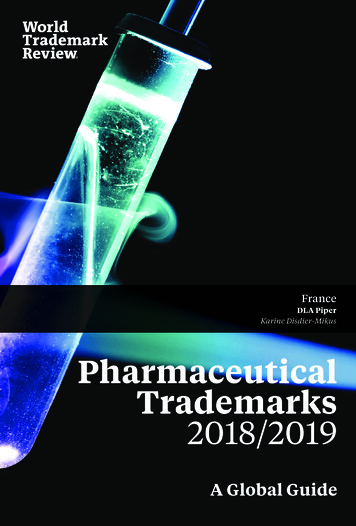
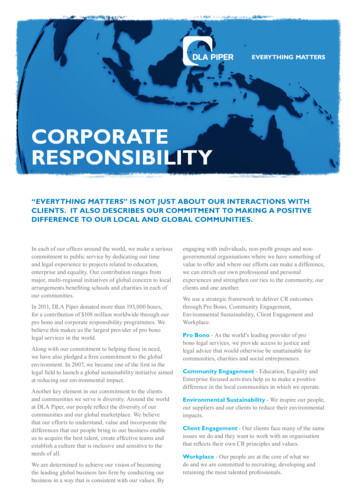

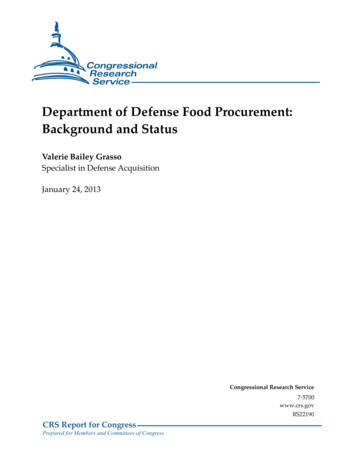
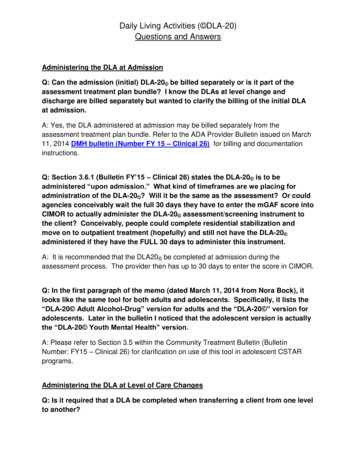
![No, David! (David Books [Shannon]) E Book](/img/65/no-20david-20david-20books-20shannon-20e-20book.jpg)
